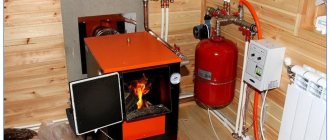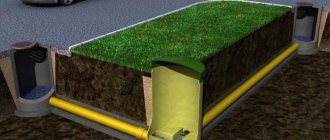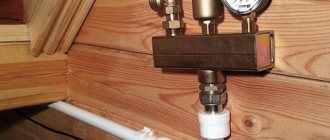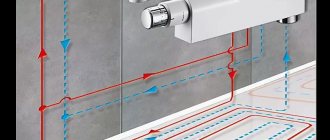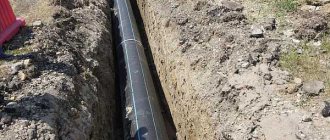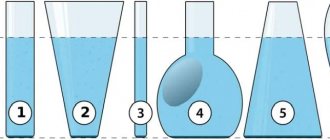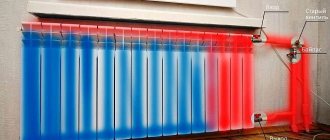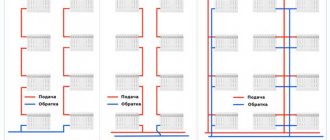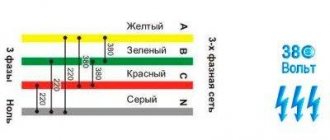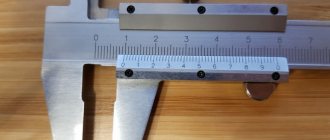Pressure in heating systems is the main reason for proper, coordinated and efficient communication of pipes and heat supply to a room or home, as well as the long-term use of units.
Working pressure is the overall coordinated work of the pump, pipes: generator, heat transfer and tank, which is calculated if you add all the indicators together.
In general, pressure is measured in the unit BAR. There are also such units as: atmosphere, joules, and so on. In most cases, the unit bar is indicated on heat transfer devices.
Pressure testing - checking the reliability of a heated floor
After a heated floor has been installed in your home, pressure testing should be carried out. But it must be done before the final surface is poured. Pressure testing is done due to the fact that although a guarantee is given for the pipes used in heated floors, this does not mean that these pipes do not have any defects. They may not be visible to the naked eye, and although they will work for a while, they may develop leaks if used under severe pressure. With the help of crimping, the reliability of pipes, the quality of the material from which they are made, as well as their tightness are checked.
After a heated floor has been installed in your home, pressure testing should be carried out
The integrity of the system can be checked before the installation of the heated floor is completed. When only part of the work has been done or the boiler has not yet been connected.
There are 2 options for how to pressurize the floor. The first is using water, the second method is using air.
In the first method, the pipe must be connected to the collector, and shut-off valves must be installed on it. The entire system should be filled from any supplied tap through a hose connected to the water supply system. The pressure created by the water should be approximately 2.5 atmospheres or a little more. If such pressure is not possible, then you need to make at least a pressure of 2 atmospheres. Water should fill everything as the coolant moves. Weight caps are closed. As water is filled, air will escape through an automatic air vent. Next, you should open the circuits one by one and bleed air through the valve to drain the system. And we do this with all the contours.
As water is filled, air will escape through an automatic air vent.
It is necessary to remove all the air, and when the system is completely filled, we leave it under pressure and see if it leaks somewhere. If a defect is found, we fix it.
The second way is with air. All taps are closed, including drainage taps. The automatic air vent is removed and a plug is installed in its place.
In order to create pressure, you will need a compressor, a pump with a pressure gauge. The pressure that needs to be created during such crimping is almost 2-3 times higher than the working one. What is the pressure on the floor in a heated water field? This pressure is usually about 1.5 or 2 atmospheres, and then when using air it should be from 4 to 5 atmospheres. Pressure should be created precisely in the heated floor, but not in the area from the collector to the boiler, since many boilers are designed for a maximum of 3 atmospheres; a larger number of atmospheres can create a risk of damage. This section is checked separately at the permissible pressure.
Pressure should be created precisely in the warm floor, but not in the area from the collector to the boiler
What pressure should be created before pouring a heated floor? A pressure of about 4 atmospheres is created. After the pressure reaches this mark, the tap is closed and the system is left alone for 24 hours. At this time, you can periodically monitor the pressure level and its drop. Even with ideal components, the pressure will drop slightly during such crimping. And an important point. The air in the heated floor should remain until the work on the floor is completed, until the final touches.
After creating pressure, all joints should be treated with soapy water or something similar.
After creating pressure, all joints should be treated with soapy water or something similar. And by the presence or absence of bubbles, it will become clear where the connection is tight and where it is not.
When choosing between the first and second methods, the second option is considered the best, especially in the natural conditions of our country. If the system is tested with water in the summer, but it will be under pressure until the cold weather, and if for unforeseen reasons it cannot be turned on before the frost, there is a danger of defrosting the heating system. And if it is possible to drain the water from the radiators, then this will not work so easily from the heated floor. There are no problems when pressing with air.
Interesting points
Warm water floors cannot be installed in city apartments without the consent of the housing and communal services. This is due to the fact that water from the general system of the building gives up its heat to the warm water floor system, thereby cooling it and reducing the pressure of the general riser of the house.
But for a country cottage, the most ideal option is a water floor. When you need to heat a decent-sized room, a water floor is more profitable, since almost no electricity is consumed.
For a country cottage, the most ideal option is a water floor.
You should not use low-quality material as the final coating, the quality of which you are not sure of. Bad material, even when heated slightly, will begin to smell bad and become deformed.
And you should not install the same underfloor heating system in rooms with different temperature conditions. If you need to make a heated floor both in the room and on the balcony, it is better to make the systems separate rather than connected.
Why does the system need to be under pressure?
Heating system pressure is an important indicator. The main reasons for taking into account the pressure in the system:
- Correct heat supply. With proper distribution of pressure, heat will take into account consumption and save the budget, as well as provide a sufficient level of heat without interruptions;
- Durability of heating devices. Effective pressure does not damage the units and instruments of the heating system: radiators, pipes, taps, boilers and so on. Heating systems are installed at the initial levels of construction and repairs or alterations will entail huge costs and loss of time and comfort.
- Safety. The pressure level in the system will help to avoid emergencies in the form of: fire, water flooding or explosion of gas appliances.
How much pressure does furniture exert on the floor?
A popular question is how much pressure a table, cabinet, or other furniture puts on the floor. Here it is worth paying attention that when laying a heated floor, it does not make sense to do it over the entire surface of the room. There is no need to heat the places where the furniture will be placed. This is an unnecessary waste of electricity, and areas of the floor that are under pressure from cabinets, sofas, and carpets will be more susceptible to overheating, and therefore will fail faster.
There is no need to heat the places where the furniture will be placed
Usually, when installing a floor, depending on the level of heat consumption (the number of windows and their sizes are a significant factor here), the distance from the walls that the furniture will approximately occupy is measured. There is no exact number as the sizes of rooms and furniture can vary significantly. But the point is that it doesn't matter how much pressure a rug or table puts on the floor. It is better to think about the location of these elements in advance, before installing a heated floor, and think about the internal laying of pipes. Whatever pressure is exerted on the floor, for example, by a carpet, remove it or do not install a warm floor in this place. Since wear and overheating of the floor will still be increased regardless of the pressure level. And do not forget, after completing all the work, to keep a plan for laying the heated floor, in case you need to subsequently rearrange the interior elements.
It is better to think about the location of furniture in advance, before installing heated floors.
If the numbers are important, what pressure something puts on the floor, what pressure a person puts on the floor, use the usual mathematical formula. To do this, you only need one tool - a scale to determine mass. We take the resulting mass and convert it into force, multiplying it by 9.8 (gravitational acceleration). Next, we place the foot on a regular sheet of paper in a box, circle it and count the number of boxes inside the outline. Each cell is equal to 0.25 square meters. cm. The sum of all cells is multiplied by another 0.25 and divided by 10,000 to convert to square meters. The weight is then divided by the area of the two feet. The result is pressure per 1 sq. m, that is, Pascals.
